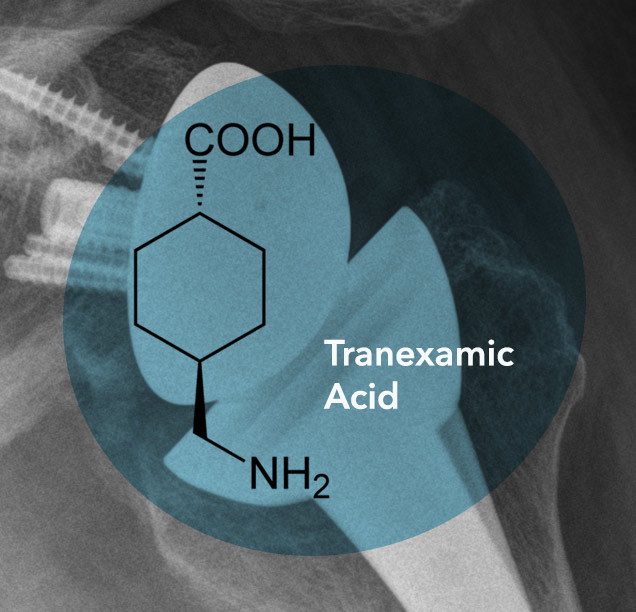Background
Stiffness after rotator cuff repair is common and difficult to prevent. The use of Tranexamic acid (“TXA”) may help but high quality studies are needed to support this theory.
Tranexamic acid is a drug that effectively reduces blood loss and helps clot formation in bleeding arteries during surgery. Its safety and benefits have been well documented in major orthopaedic procedures such as hip replacement, knee replacement, trauma and spinal surgery.
The use of TXA in shoulder surgery is becoming more popular and has shown many advantages. Although transfusion and blood loss are not common in shoulder arthroscopy and rotator cuff repair, stiffness after rotator cuff repair surgery can occur, with reported rates in patients ranging from 4.7% to 32.7%. Whilst a variety of factors have been proposed to contribute to post-operative stiffness, prevention of stiffness has been difficult, even with early range of motion protocols 17-23.
Bleeding into joint spaces has been shown to cause acute stiffness and pain as well as incite an immune response that can lead to the thickening and scarring of connective tissue 24-26, but its role in postoperative stiffness has not been established. That said, TXA use has been studied in knee arthroscopy and ACL reconstruction and has shown a reduction in pain and improved early range of motion. This has thought to have been associated with lower bleeding into the joint postoperatively 27.
Currently, no literature exists looking at TXA use in shoulder arthroscopy and rotator cuff repair. The published evidence on TXA use in shoulder surgery is limited to arthroplasty procedures, which shows a decrease in blood loss and drain tube output 12,14,28,29. Therefore, there is a need for more high-level studies to support the use of intravenous TXA in arthroscopic shoulder surgery and rotator cuff repair.



